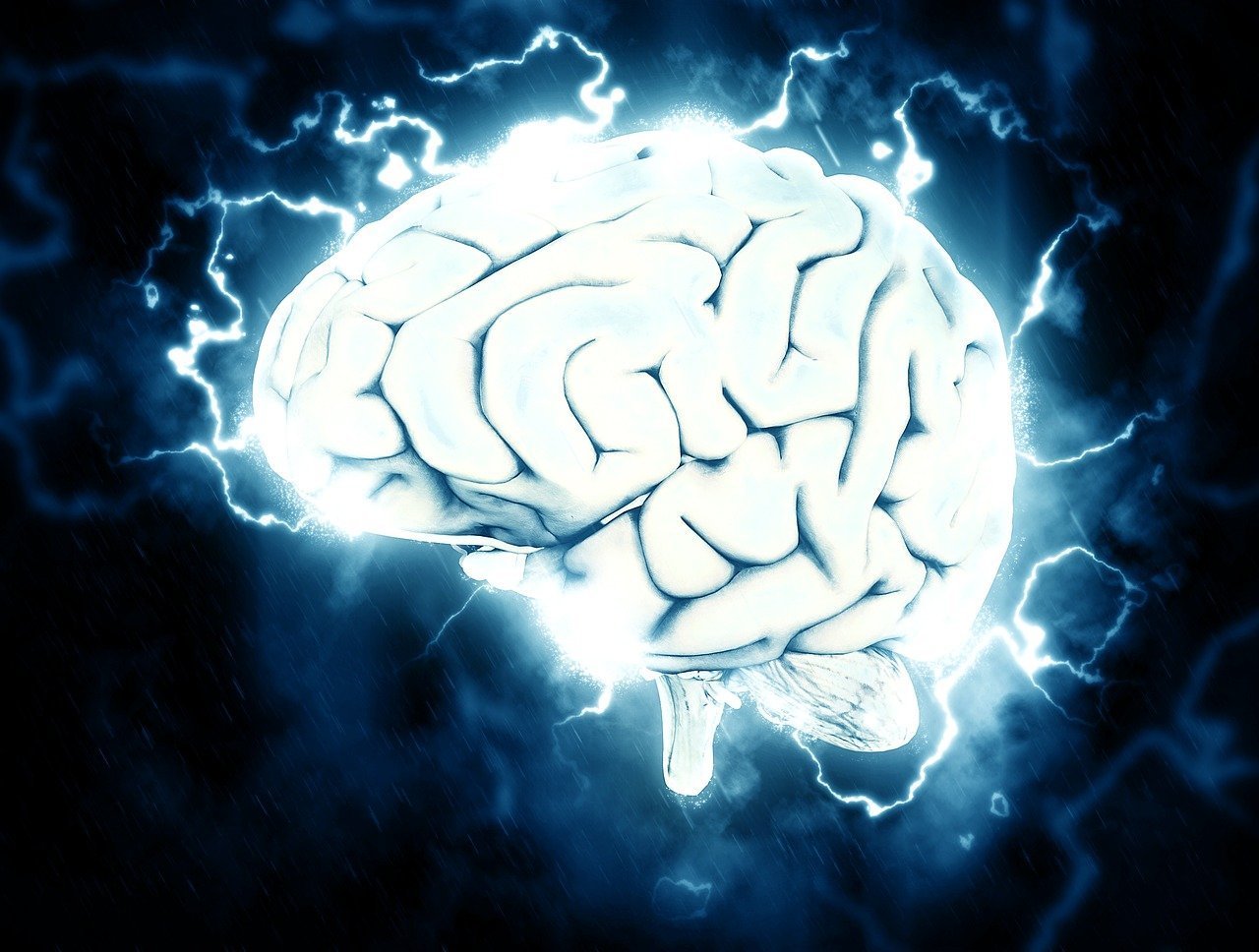[ad_1]
Summary: The launch of 2-AG, a pure endocannabinoid that’s advised to be the mind’s equal to THC, dampens down seizure exercise but will increase post-seizure oxygen deprivation within the mind.
Source: Stanford
A marijuana-like chemical within the mind, mirroring its plant-based counterpart, packs each ups and downs.
Epileptic seizures set off the fast synthesis and launch of a substance mimicked by marijuana’s most psychoactive part, Stanford University School of Medicine investigators have discovered. This substance is known as 2-arachidonoylglycerol, or 2-AG, and has the useful impact of damping down seizure depth.
But there’s a darkish facet. The equally fast breakdown of 2-AG after its launch, the researchers discovered, journeys off a cascade of biochemical reactions culminating in blood-vessel constriction within the mind and, in flip, the disorientation and amnesia that usually comply with an epileptic seizure.
The Stanford scientists’ findings, reached in collaboration with colleagues at different establishments within the United States, Canada and China, are described in a examine to be printed Aug. 4 in Neuron. Ivan Soltesz, PhD, professor of neurosurgery, shares senior authorship with G. Campbell Teskey, PhD, professor of cell biology and anatomy on the University of Calgary in Alberta, Canada. The examine’s lead writer is Jordan Farrell, PhD, a postdoctoral scholar in Soltesz’s group.
The researchers’ discoveries may information the event of medication that each curb seizures’ strength and cut back their aftereffects.
Electrical storm within the mind
About one in each hundred individuals has epilepsy. Epileptic seizures will be described as {an electrical} storm within the mind. These storms usually start at a single spot the place nerve cells start repeatedly firing collectively in synchrony. The hyperactivity typically spreads from that one spot to different areas all through the mind, inflicting signs comparable to loss of consciousness and convulsions. It’s typical for the person experiencing a seizure to wish tens of minutes earlier than changing into clearheaded once more.
The majority of epileptic seizures originate within the hippocampus, a mind construction buried within the temporal lobe, mentioned Soltesz, the James R. Doty Professor of Neurosurgery and Neurosciences. The hippocampus performs an outsized position in short-term reminiscence, studying and spatial orientation. Its means to shortly undertake new neuronal firing patterns renders it particularly susceptible to glitches that provoke seizures. (Most epileptic seizures in adults start in or close to the hippocampus, Soltesz famous.)
In the examine, Soltesz and his associates monitored split-second modifications in ranges of 2-AG within the hippocampus of mice in periods of regular exercise, like strolling or running, and in experiments during which transient seizures had been induced within the hippocampus.
2-AG is an endocannabinoid, a member of a household of short-lived signaling substances which might be the mind’s inside variations of the psychoactive chemical substances in marijuana. 2-AG and these plant-derived psychoactive chemical substances share an affinity for a receptor, referred to as CB1, that’s extraordinarily ample on the floor of neurons all through the mind.
“There have been lots of studies providing evidence for a connection between seizures and endocannabinoids,” Soltesz mentioned. “What sets our study apart is that we could watch endocannabinoid production and action unfold in, basically, real time.”
A brake on pleasure
Endocannabinoids are understood to play a task in inhibiting extreme pleasure within the mind. When excitatory neurons, secreting chemical “go” indicators, exceed a threshold, they induce the manufacturing and launch of endocannabinoids, whose binding to CB1 on an excitatory neuron acts as a brake, ordering that neuron to sit back out slightly.
While smoking marijuana floods your complete mind with comparatively long-lasting THC, endocannabinoids are launched in exact spots within the mind underneath exact circumstances, and their fast breakdown leaves them in place and lively for terribly quick intervals of time, mentioned Soltesz, who has been finding out the connection between endocannabinoids and epilepsy for many years.
But as a result of endocannabinoids are so fragile and break down so shortly, till lately there was no option to measure their fast-changing ranges in animals’ brains. “Existing biochemical methods were far too slow,” he mentioned.

The most up-to-date examine had its start when Soltesz discovered of a brand new endocannabinoid-visualization methodology invented by examine co-author Yulong Li, PhD, a professor of neuroscience at Peking University in Beijing. The methodology includes the bioengineering of choose neurons in mice in order that these neurons specific a modified model of CB1 that emits a fluorescent glow each time a cannabinoid binds to the modified endocannabinoid receptor. The fluorescence will be detected by photosensitive devices.
Using this new device, the scientists may monitor and localize sub-second modifications in fluorescence that correlate with endocannabinoid ranges the place that binding was occurring.
Zeroing in on 2-AG
By blocking enzymes essential to the manufacturing and breakdown of various endocannabinoids, the researchers proved that 2-AG alone is the endocannabinoid substance whose surges and fast disappearance monitor neuronal exercise within the mice. Several hundred occasions as a lot 2-AG was launched when a mouse was having a seizure in contrast with when it was merely running in place.
The researchers had been in a position to rule out the involvement of an alternate endocannabinoid, anandamide, that many neuroscientists and pharmacologists had assumed was the lively substance. Anandamide’s title is derived from the Sanskrit phrase for “bliss.”
“This previously undetected activity-dependent surge in levels of 2-AG downregulates excitatory neurons’ excessive rhythmic firing during a seizure,” Soltesz mentioned.
But 2-AG is nearly instantly transformed to arachidonic acid, a building block for inflammatory compounds known as prostaglandins. The researchers confirmed that the following improve in arachidonic acid ranges resulted within the buildup of a selected number of prostaglandin that causes constriction of tiny blood vessels within the mind the place the seizure has induced thatprostaglandin’s manufacturing, reducing off oxygen provide to these mind areas.
Oxygen deprivation is thought to provide the cognitive deficits — disorientation, reminiscence loss — that happen after a seizure, Soltesz mentioned.
“A drug that blocks 2-AG’s conversion to arachidonic acid would kill two birds with one stone,” Soltesz mentioned. “It would increase 2-AG’s concentration, diminishing seizure severity, and decrease arachidonic acid levels, cutting off the production of blood-vessel-constricting prostaglandins.”
Soltesz is a member of Stanford Bio-X, the Wu Tsai Neurosciences Institute at Stanford, and the Stanford Maternal and Child Health Research Institute.
Another Stanford co-author of the examine is postdoctoral scholar Barna Dudok, PhD.
See additionally

Other researchers on the University of Calgary, in addition to researchers at Vanderbilt University, contributed to the work.
Funding: The examine was funded by the National Institutes of Health (grants Okay99NS117795, MH107435, 1S10OD017997-01A1, NS99457 and NS103558), the Canadian Institutes of Health Research, the Beijing Municipal Science & Technology Commission, the National Natural Science Foundation of China, and the Peking University School of Life Sciences.
Stanford’s Department of Neurosurgery additionally supported the work.
About this epilepsy analysis information
Source: Stanford
Contact: Bruce Goldman – Stanford
Image: The picture is within the public area
Original Research: Closed entry.
“In vivo endocannabinoid dynamics at the timescale of physiological and pathological neural activity” by Ivan Soltesz et al. Neuron
Abstract
In vivo endocannabinoid dynamics on the timescale of physiological and pathological neural exercise
Highlights
- •2-AG, not AEA, is the principle activity-dependent endocannabinoid within the CA1
- •In vivo 2-AG ranges are underneath exact spatiotemporal regulation
- •Seizures amplify 2-AG manufacturing, which restricts seizure exercise
- •Seizure-driven 2-AG synthesis, nonetheless, fuels a chronic stroke-like occasion
Summary
The mind’s endocannabinoid system is a strong controller of neurotransmitter launch, shaping synaptic communication underneath physiological and pathological circumstances.
However, our understanding of endocannabinoid signaling in vivo is proscribed by the lack to measure their modifications at timescales commensurate with the high lability of lipid indicators, leaving elementary questions of whether or not, how, and which endocannabinoids fluctuate with neural exercise unresolved.
Using novel imaging approaches in awake behaving mice, we now display that the endocannabinoid 2-arachidonoylglycerol, not anandamide, is dynamically coupled to hippocampal neural exercise with high spatiotemporal specificity.
Furthermore, we present that seizures amplify the physiological endocannabinoid improve by orders of magnitude and drive the downstream synthesis of vasoactive prostaglandins that culminate in a chronic stroke-like occasion.
These outcomes shed new gentle on regular and pathological endocannabinoid signaling in vivo.
[ad_2]